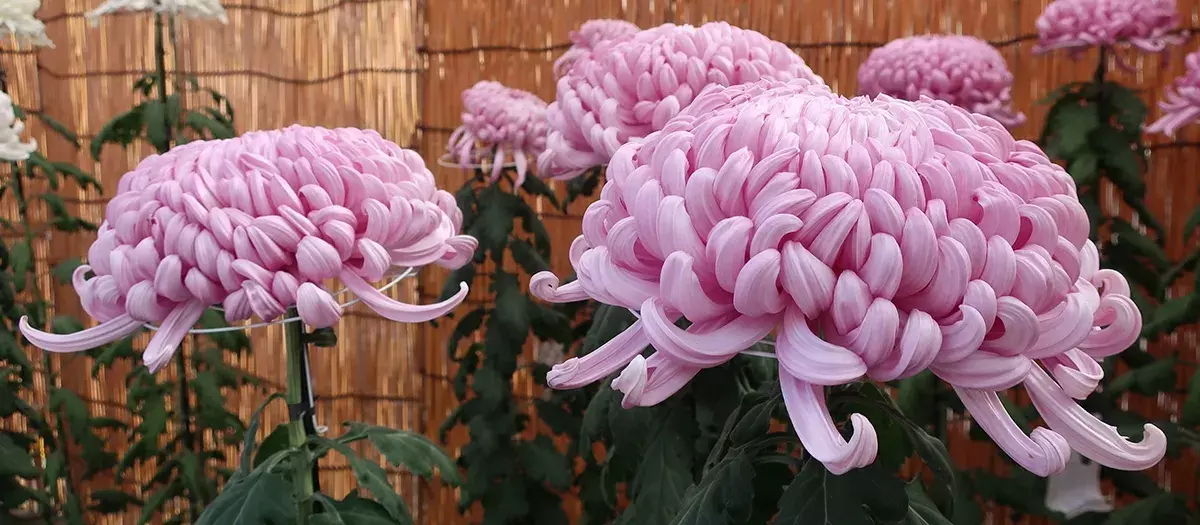Why chrysanthemums deserve a spot in every Indian garden
They have medicinal uses and the dry flowers are used to make Chrysanthemum tea in China
By - Beyniaz Edulji |
Hyderabad: Chrysanthemum are very hardy flowering plants that grow easily and are sold in most garden and roadside nurseries. When it comes to adding colour, cheer, and freshness to your garden, very few flowers can beat the hardy Chrysanthemum, also known as ‘Mums’, Chandramallika in Hindi or ‘Chamunti’ in Telugu. Said to be Indira Gandhi’s favourite flower, these vibrant blooms come in shades of yellow, pink, red, white, orange, and purple, making them a beautiful addition in any home garden or balcony. If grown indoors, chrysanthemums purify indoor air, keep blooming for months together and remove toxins like benzene and formaldehyde. They have medicinal uses and the dry flowers are used to make Chrysanthemum tea in China.
Winter blooms
With proper care, these flowers bloom for several months, especially during winter. In Indian homes, chrysanthemums are seen as symbols of happiness, optimism, and longevity. Chrysanthemums bloom best between October and February in India.
Versatile
They can be planted in the garden, balcony, in pots, or decorative planters, and add a splash of bright colour.
Attracting Tourists in Kashmir
Chrysanthemum exhibitions and flower shows take place all over the world. Kashmir is known for its tulips, which brings in lakhs of tourists every year. However, with the introduction of a new 5-acre chrysanthemum garden, with over 100,000 chrysanthemums, the region seeks to extend its tourist season beyond spring and into the autumn months. The new garden was thrown open on 25 October this year, with a riot of colours and blooming flowers decorating the landscape in the midst of the scenic Zabarwan hills in Srinagar. The Bagh-e-Gul-e-Dawood Garden is the first of its kind in Kashmir, and it has already earned the distinction of being the largest chrysanthemum garden in Asia.
Types of Chrysanthemums
There are hundreds of varieties worldwide, but some varieties that grow well in India are:
Spider Chrysanthemum – Long, curling petals resembling spider legs.
Pompon Chrysanthemum – Small, round, ball-like blooms; ideal for pots.
Anemone Chrysanthemum – Central dome with colorful outer petals.
Single or Daisy Chrysanthemum – Simple, bright blooms that look like daisies.
Incurve Chrysanthemum – Large, globe-shaped flowers with inward-curving petals.
Spoon Chrysanthemum – Petals shaped like tiny spoons at the ends.
Quill Chrysanthemum – Thin, tube-like petals giving a firework effect.
One can mix these varieties for a vibrant winter garden.
Chrysanthemums need lots of sunlight
Light plays a huge role in chrysanthemum care and bloom quality. They need 6 hours of direct sunlight daily. Morning sun is best as it encourages compact growth and richer colour. If you live in a very hot region, keep them in partial shade during peak afternoon hours. If growing indoors, place near a bright, south-facing window for healthy growth. The more sunlight they get, the more blooms they produce.
Type of Soil required
Chrysanthemums need well-drained, nutrient-rich soil as poor drainage can easily lead to root rot. The best mix for them is equal quantities of garden soil, organic leaf compost or cow dung and cocopeat. Ensure the pot has proper drainage holes. You can also add vermicompost every month to keep them blooming.
Watering Tips
Watering is a key factor in chrysanthemum care. They like moist soil but hate soggy roots. Water when the top 1 inch of soil feels dry. Avoid over watering and water at the base to prevent fungal infection. In hot weather, water daily or every alternate day. During winter, reduce watering so chrysanthemums stay lush, healthy, and full of blooms.
Pruning Tips
To maintain compact, bushy plants and continuous flowering, once your plant reaches 6 inches, pinch off the top leaves to encourage side branching. Repeat every 15 days until flower buds appear. After the flowering season, prune the plant to half its size. Remove dead or yellow leaves regularly. This helps to direct energy into new growth and prevent pests.
Common Pests
Even though chrysanthemums are strong plants, they can attract some pests. Watch out for Aphids and Mealybugs which may appear on new shoots, Spider Mites that can cause leaf discoloration in dry weather, and Fungal Rot that takes place when you overwater your plants.
Natural Pesticides
Spray neem oil solution weekly Mix 5ml neem oil, 1Litre water and 2 drops of mild soap like Vim. Ensure good airflow and avoid crowded pots. Use neem cake in the soil every 2 months for prevention.
Seasonal Care
Different seasons need different care for your chrysanthemum plants. In Summer, keep in partial shade, and water often. During the Monsoon, reduce watering; and check for fungal infections. In Winter which is the best time for these plants, give full sunlight and regular feeding.
Propagation Method
You can grow new chrysanthemums easily through cuttings. Take 6-inch cuttings from thick and healthy stems. Dip the ends in rooting hormone or honey. Plant in a mix of cocopeat and sand. Keep it lightly moist until roots form which will be about 15 days. Once rooted, transfer to a bigger pot with good soil and place in sunlight.